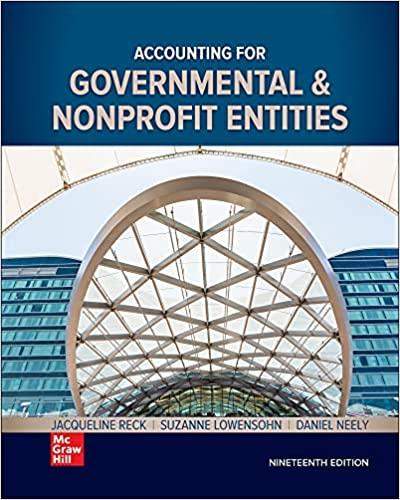Question
Chapter7 - Using the Codification to Research Measurement Issues (questions #9, 19, & exercises 5, 8, 11 and 12 in your text) Review Questions 9.What
Chapter7 - Using the Codification to Research Measurement Issues(questions #9, 19, & exercises 5, 8, 11 and 12 in your text)
Review Questions
9.What does it mean, for most of the Codification's measurement guidance to be "topic-specific"? What implications does this have for a researcher, looking for guidance in the Codification?
19.Describe the process for determining whether the value of inventory should be written down, below its cost.
Exercises
Other Measurement Topics
Respond to the following using guidance in the Codification. Cite your sources for all responses.
5.In periods subsequent to the acquisition date in a business combination, how should an acquirer measure contingent liabilities assumed? Assume the contingencies were recognized as of the acquisition date.
8.In periods subsequent to initial measurement, is goodwill amortized?Explain and cite the Codification reference for your response.
11.Once an entity has determined that it is probable of having an environmental remediation liability, what costs must the entity initially include in its estimated environmental remediation liability (an "environmental obligation")?
12.Under Topic 835-20 (Capitalization of Interest), what amount of interest may initially be capitalized as part of the initial investment in an asset, for certain qualifying assets? How should a company determine its "capitalization rate" for capitalizing interest?
Chapter8 - Fair Value Measurements in the Codification(exercises 3, 5, 6 & 11 in your text)
Exercises to Improve Your Familiarity with Guidance in ASC 820. Respond to the following, citing your sources for all responses.
3.Briefly summarize, then explain the significance of, par. 15-1 (scope) of ASC 820-10 (Fair Value Measurement).
5.Briefly summarize par. 30-3 (initial measurement) of ASC 820-10 and provide one example listed in par. 30-3A of an instance when transaction price may not be reflective of fair value.
6.Assume that a wealthy investor owns 15% of a single, publicly-traded company.In what level of the fair value hierarchy should this measurement be classified?Should the investor adjust the fair value to reflect the fact that its position would be too large to sell in a single day (without negatively impacting the share price)?Such adjustments may be described as "blockage" factors.
11.Using EY'sFinancial Reporting Developmentspublication,Fair Value Measurement,look for the discussion ofmarket participants, in the context of understanding broad fair value concepts.What is the role of market participants in measuring fair value, and is it necessary for an entity to identify specific market participants when forming fair value assumptions?
The information comes from Account research and information book. ISBN-13: 9781618533159
Step by Step Solution
There are 3 Steps involved in it
Step: 1

Get Instant Access to Expert-Tailored Solutions
See step-by-step solutions with expert insights and AI powered tools for academic success
Step: 2

Step: 3

Ace Your Homework with AI
Get the answers you need in no time with our AI-driven, step-by-step assistance
Get Started


